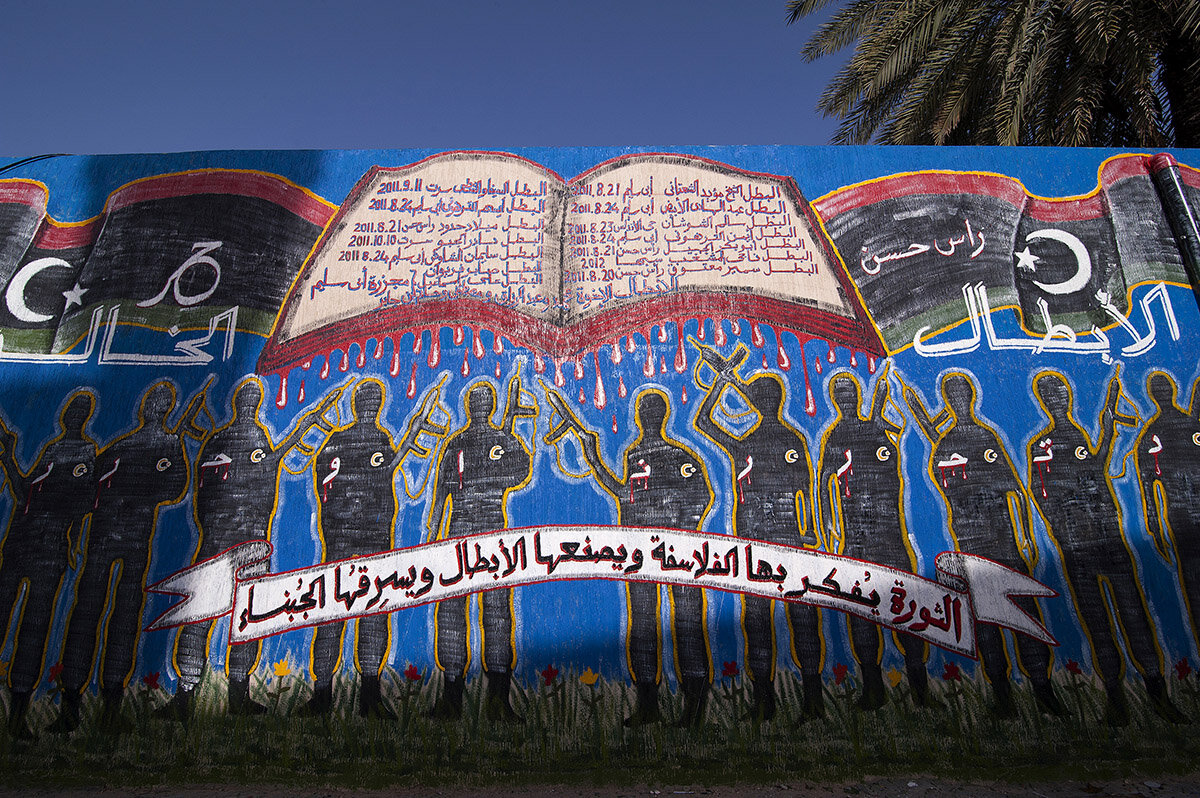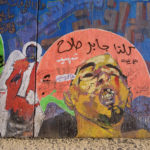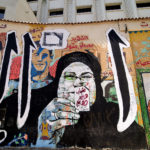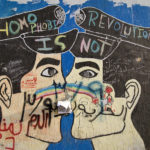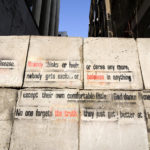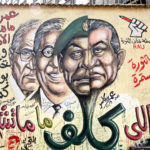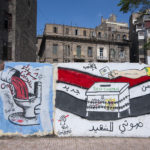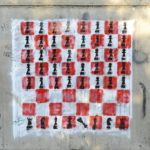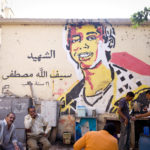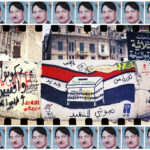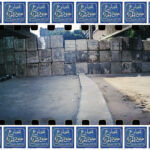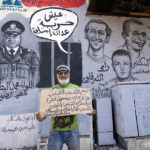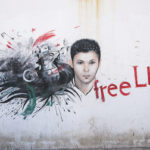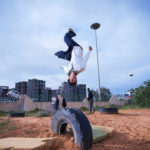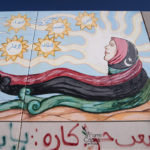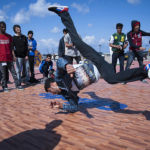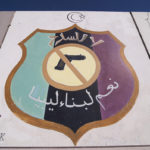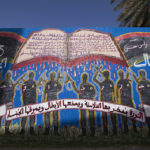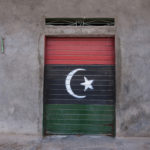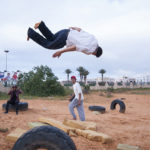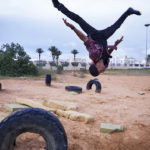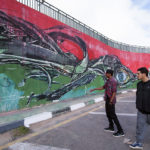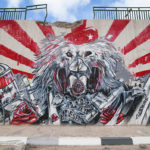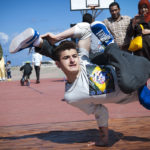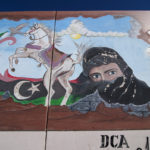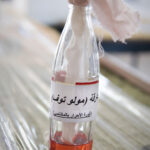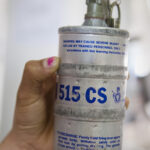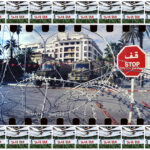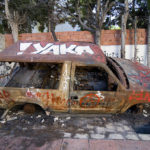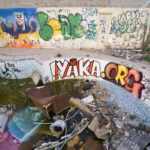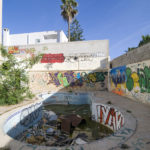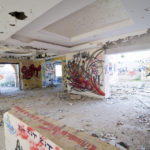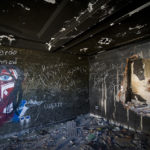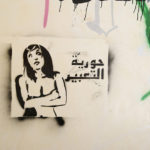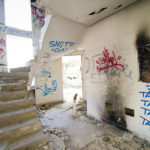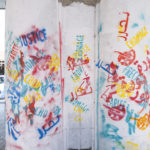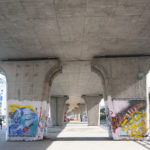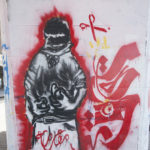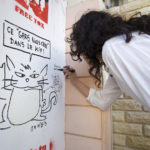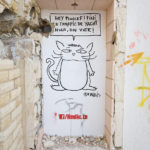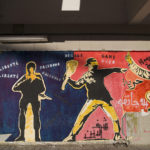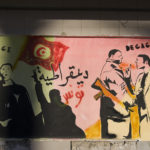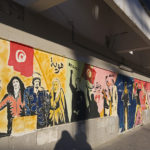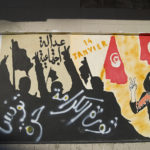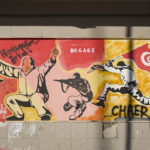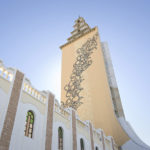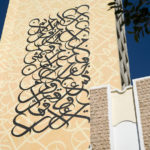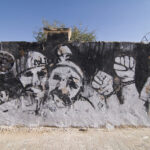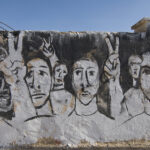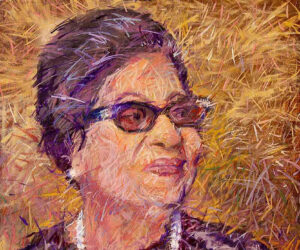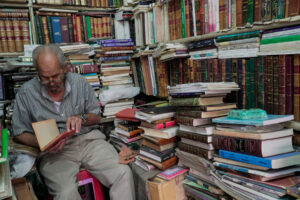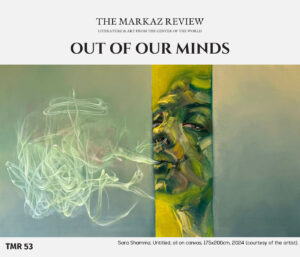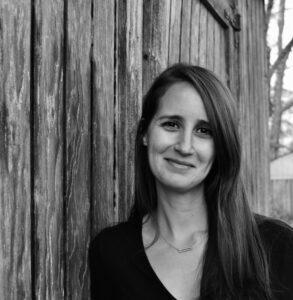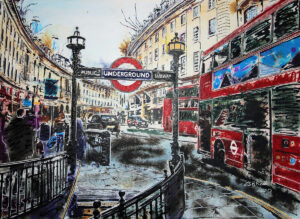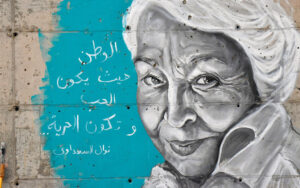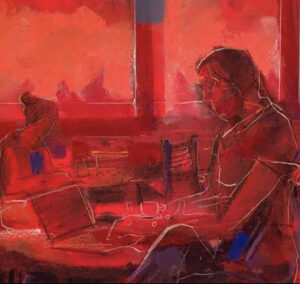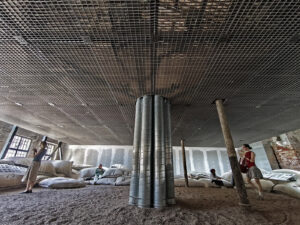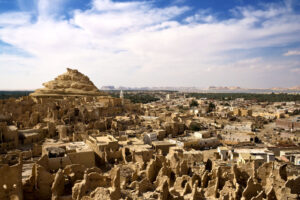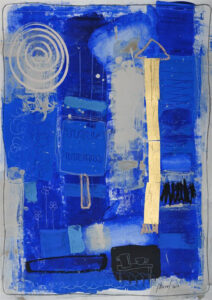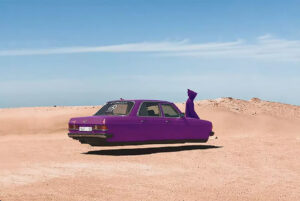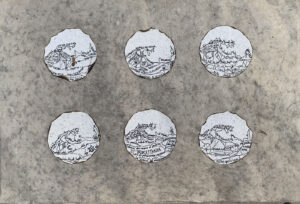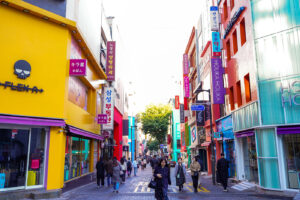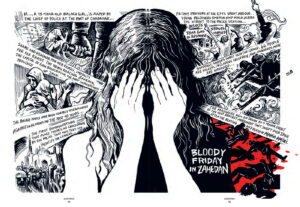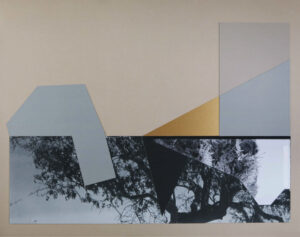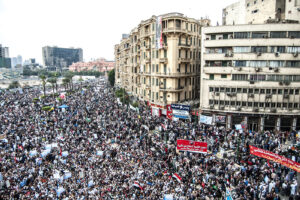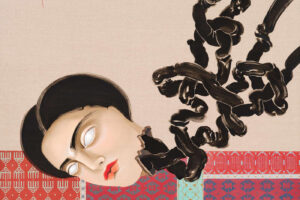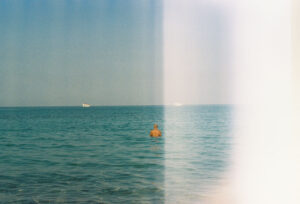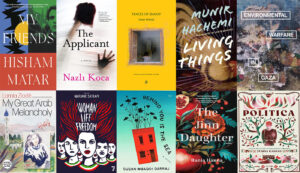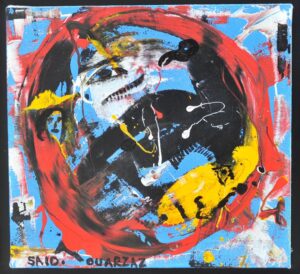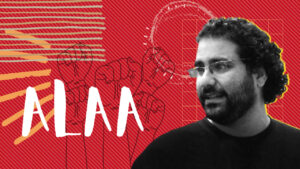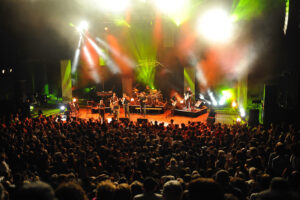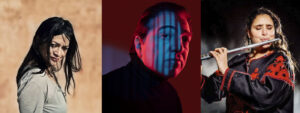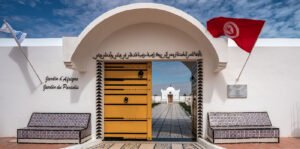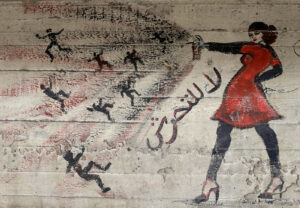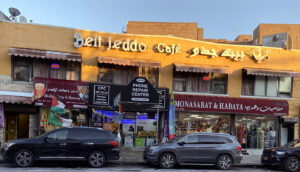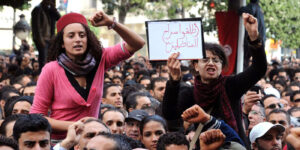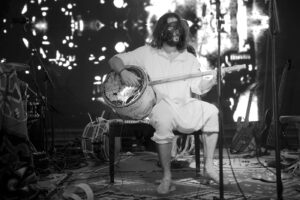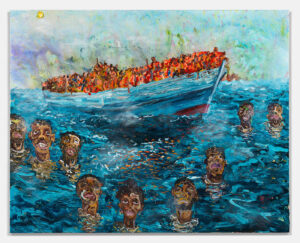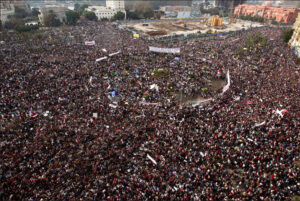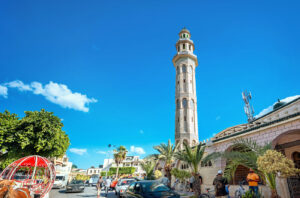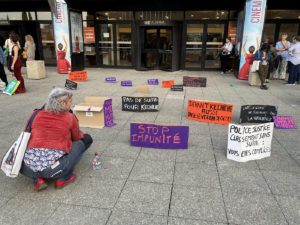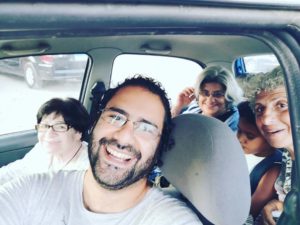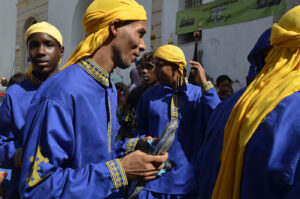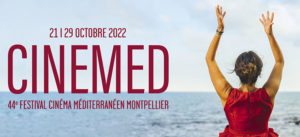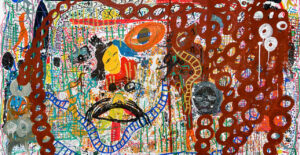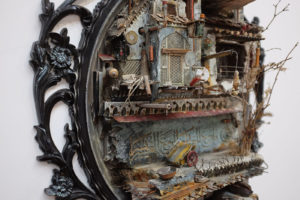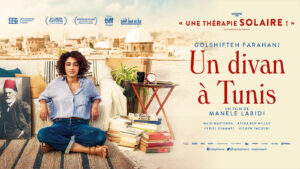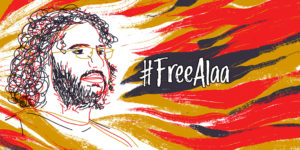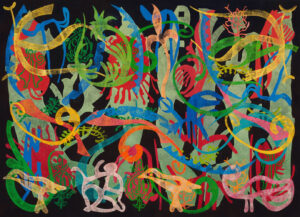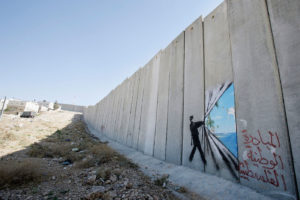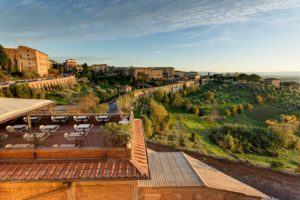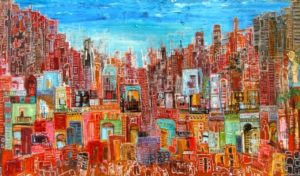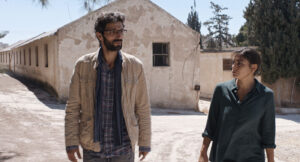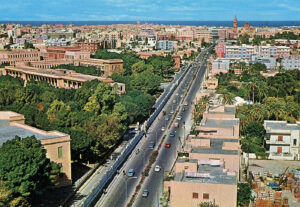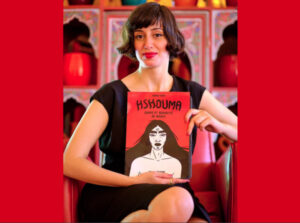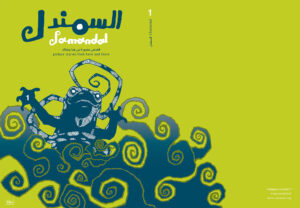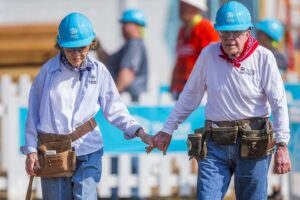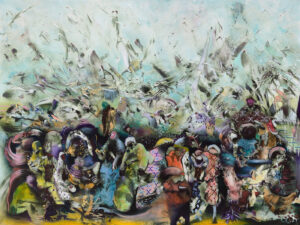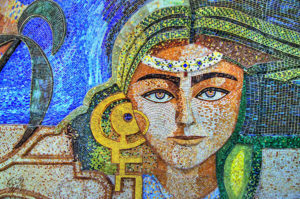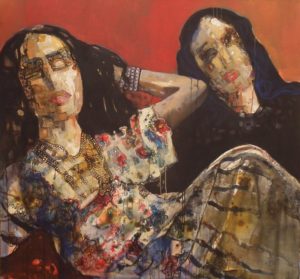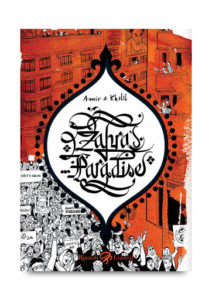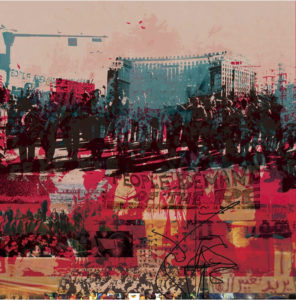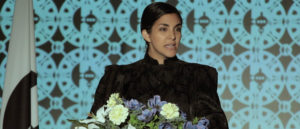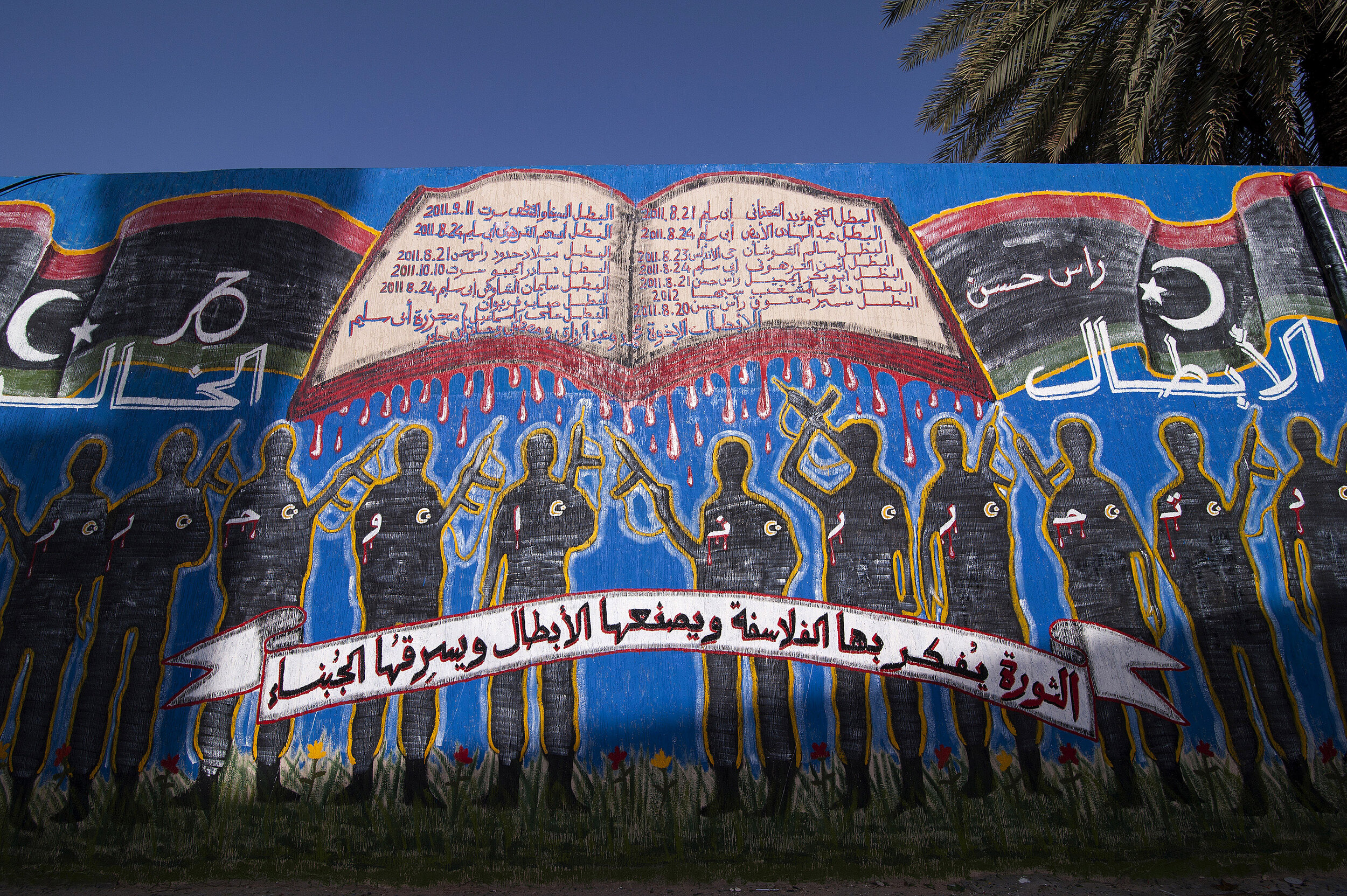
Photography and text by Claudia Wiens
From early 2011 till the end of 2014, I documented urban transformation as a result of the political uprisings in Tunisia, Libya and Egypt. These photos are part of my long-term project about post-revolution art and artists in these three countries. While documenting the lives and work of artists, I realized that they often reacted to (or rather their art responded to) changes in the urban landscape, including new fences and walls. Some of them were actually adding themselves to these changes with their graffiti and murals. A sort of ongoing urban dialogue between artists, protesters and authorities continues to fascinate both native and international observers. “Art is the watchdog of democracy,” someone once said to me. No doubt politics are a source of inspiration.
During the uprising in Egypt, I spent much time with friends in Tahrir Square witnessing the unbelievable creativity of ordinary citizens and artists, expressing their dislike for Mubarak and his government. The sudden political change set lots of creative potential free and people gained a new freedom of opinion, or rather a newly-discovered courage to voice opinion, and this led to a wild creative urge in all three countries. At the beginning, it was often straightforward statements painted on walls and posters, such as graffiti discrediting the respective regimes, commemorating ‘martyrs’ and expressing demands. Then creative inventories of what happened followed, like displaying homemade Molotov-cocktails in a small exhibition at a youth center in Meknessi, Tunisia — one of the first sites of the Jasmeen Revolution.
Gradually, the art evolved into something broader, more reflective and often more daring. Many walls turned into an ever-changing visual history book of murals reacting to constantly changing political events. The art condemned state violence, religious extremism and corruption or warned of the new dangers of rule by the military.
The collages show quickly changing cityscapes: graffiti that appears and then often disappears again; relicts of the revolution like burned out buildings or cars; flags waving a newly discovered national pride; and newly erected walls and barbwire by the authorities. I used a panoramic Lomo film camera in order to transport the feeling of all is in flux, transient/transitory/short-lived and changes unpredictably all the time. The graininess and imperfection of an analogue Lomo seems to me a fitting way to transport this quite well. As there were so many contradicting, paradoxical and also amusing things happening at the same time, almost like in parallel universes and cannot be caught in single photos I merged two images that either contradict or complement each other. It is my interpretation of the complex events, action and reaction of the various players.
Cairo, Egypt
Tripoli, Libya
Graffiti and street art was forbidden under Qaddafi. After his death for the first time people dared to own the streets and paint murals at the walls expressing their emotions and thoughts. But even in 2014 street art was just starting to be a little more popular, unlike in neighboring Egypt where was already a blooming way of expression and the streets turned into a frequently changing history book. Murals and graffiti in Libya are still quite tame, but the people are warming up to writing on the wall.
The b-boying scene in Libya started around 1999-2000 (but was always underground and hidden) and is now since Qaddafi’s death gaining new momentum. More and more young guys (girls are still not publicly coming forward) are starting to breakdance and doing parkour. It is a way of expressing their feelings, rebelling against conservatism and also staying sane in times of constant political turmoil and violence. They practice in unused sport halls, on sandy pitches outside, even on the street.
Festivals take place in a public space with dozens of participants and hundreds of spectators. Breaking down former invisible barriers as foreign cultural activities were not allowed. It might look a harmless thing to do to someone who is not familiar with the living conditions under Qaddafi. Even after his death it is potentially dangerous as militia or religious fanatics could object to those young guys gathering in public spaces listening to American music and engaging publicly in something that is foreign to Libyan culture.
Tunis, Meknessi and Gabes, Tunisia
During the revolution many places that belonged to Ben Ali’s family got looted and then painted over with graffiti and murals. You see here photos I shot of the former villa of Moncef Trabelsi, brother-in-law of Zine El Abidine Ben Ali, who died in 2018 but still is on the EU sanction list. Many artists “re-decorated” his villa. You also see photos of a youth center in Meknessi whose walls got turned into an exhibition about the revolution in memory of what is possible when the people rise up.And thirdly photos of walls in Gabes that also serve as a history book and the mosque that was decorated by the street artist el Seed.



